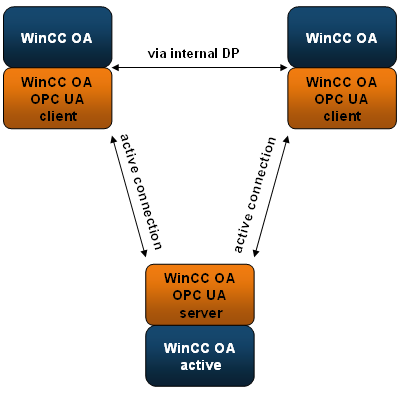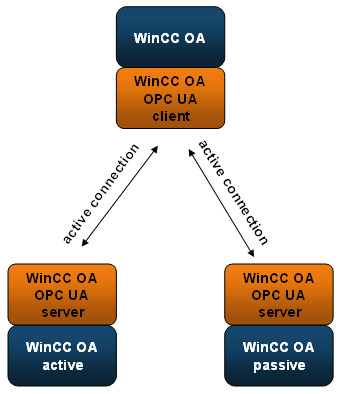OPC UA Client - Redundancy
Client Redundancy active/active
Both clients are processed active with respect to the server. For the server there seem to be two separated connections. The real active/passive mechanism and the related discarding of values is carried out in WinCC OA. In order to avoid a data loss during the switch-over a general query is recommended (see autoGQ).
The advantage of this redundancy variant is that the server has not to support any redundancy abilities.
The figure below shows the client redundancy architecture in the active/active form.

OPC UA Server Redundancy
The UA client supports the communication to a redundant UA server pair. According to the UA specification, it implements a Hot redundancy. The client is always connected to both servers. The subscriptions are created and activated on both servers. Regarding the monitored items there are 2 possibilities depending on the configuration (_OPCUAServer.Config.Flags Bit 2).- The monitored items are enabled on both servers, so both servers will deliver data.
- The monitored items are only enabled on the server with the higher service level if both servers are connected.
You can also configure a preferred input if data is received via both connections via the _OPCUAServer.Redu.InputMode datapoint element.
If both connections transfer data, the client uses the timestamp of the value to remove duplicate values.
The client always sends the commands to both servers. The redundant UA server pair must handle these "duplicate" commands correctly.
Other OPC UA services such as browsing, the conversion of BrowsePath to NodeId or historical queries are sent to the server with the higher service level. If both servers have the same level, the first server is used.



